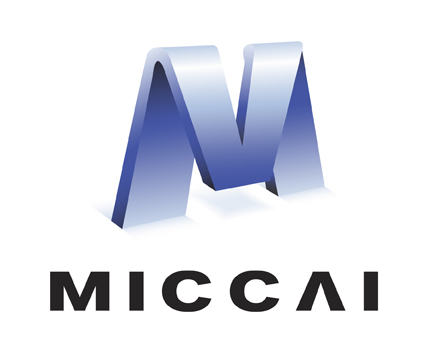Abstract
Chest X-ray (CXR) is the most common examination for fast detection of pulmonary abnormalities. Recently, automated algorithms have been developed to classify multiple diseases and abnormalities in CXR scans. However, because of the limited availability of scans containing nodules and the subtle properties of nodules in CXRs, state-of-the-art methods do not perform well on nodule classification. To create additional data for the training process, standard augmentation techniques are applied. However, the variance introduced by these methods are limited as the images are typically modified globally. In this paper, we propose a method for local feature augmentation by extracting local nodule features using a generative inpainting network. The network is applied to generate realistic, healthy tissue and structures in patches containing nodules. The nodules are entirely removed in the inpainted representation. The extraction of the nodule features is processed by subtraction of the inpainted patch from the nodule patch. With arbitrary displacement of the extracted nodules in the lung area across different CXR scans and further local modifications during training, we significantly increase the nodule classification performance and outperform state-of-the-art augmentation methods.
Access this chapter
Tax calculation will be finalised at checkout
Purchases are for personal use only
Similar content being viewed by others
References
Ausawalaithong, W., Thirach, A., Marukatat, S., Wilaiprasitporn, T.: Automatic lung cancer prediction from chest X-ray images using the deep learning approach. In: 11th Biomedical Engineering International Conference (BMEiCON), pp. 1–5 (2018)
Goldstraw, P., et al.: The IASLC lung cancer staging project: proposals for the revision of the TNM stage groupings in the forthcoming (seventh) edition of the TNM classification of Malignant Tumours. J. Thorac. Oncol. 2(8), 706–714 (2007)
Guan, Q., Huang, Y., Zhong, Z., Zheng, Z., Zheng, L., Yang, Y.: Diagnose like a radiologist: attention guided convolutional neural network for thorax disease classification. arXiv:1801.09927 (2018)
Gündel, S., Grbic, S., Georgescu, B., Liu, S., Maier, A., Comaniciu, D.: Learning to recognize abnormalities in chest X-rays with location-aware dense networks. In: Vera-Rodriguez, R., Fierrez, J., Morales, A. (eds.) CIARP 2018. LNCS, vol. 11401, pp. 757–765. Springer, Cham (2019). https://doi.org/10.1007/978-3-030-13469-3_88
Li, Z., et al.: Thoracic disease identification and localization with limited supervision. In: 2018 IEEE/CVF Conference on Computer Vision and Pattern Recognition (CVPR), pp. 8290–8299 (2018)
Rajpurkar, P., et al.: CheXNet: radiologist-level pneumonia detection on chest x-rays with deep learning. arXiv:1711.05225 (2017)
Ronneberger, O., Fischer, P., Brox, T.: U-Net: convolutional networks for biomedical image segmentation. In: Navab, N., Hornegger, J., Wells, W.M., Frangi, A.F. (eds.) MICCAI 2015. LNCS, vol. 9351, pp. 234–241. Springer, Cham (2015). https://doi.org/10.1007/978-3-319-24574-4_28
Shiraishi, J., et al.: Development of a digital image database for chest radiographs with and without a lung nodule: receiver operating characteristic analysis of radiologists’ detection of pulmonary nodules. In: AJR, pp. 71–74 (2000)
Shorten, C., Khoshgoftaar, T.M.: A survey on image data augmentation for deep learning. J. Big Data 6, 1–48 (2019)
Siegel, R.L., Miller, K.D., Jemal, A.: Cancer statistics, 2019. CA: Cancer J. Clin. 69(1), 7–34 (2019)
Sogancioglu, E., Hu, S., Belli, D., van Ginneken, B.: Chest X-ray inpainting with deep generative models. arXiv:1809.01471 (2018)
Asgari Taghanaki, S., Das, A., Hamarneh, G.: Vulnerability analysis of chest X-ray image classification against adversarial attacks. In: Stoyanov, D., et al. (eds.) MLCN/DLF/IMIMIC -2018. LNCS, vol. 11038, pp. 87–94. Springer, Cham (2018). https://doi.org/10.1007/978-3-030-02628-8_10
Wang, X., Peng, Y., Lu, L., Lu, Z., Bagheri, M., Summers, R.: ChestX-ray8: hospital-scale chest X-ray database and benchmarks on weakly-supervised classification and localization of common thorax diseases. In: 2017 IEEE Conference on Computer Vision and Pattern Recognition (CVPR), pp. 3462–3471 (2017)
Yao, L., Poblenz, E., Dagunts, D., Covington, B., Bernard, D., Lyman, K.: Learning to diagnose from scratch by exploiting dependencies among labels. arXiv:1710.10501 (2018)
Yu, J., Lin, Z.L., Yang, J., Shen, X., Lu, X., Huang, T.S.: Generative image inpainting with contextual attention. In: 2018 IEEE/CVF Conference on Computer Vision and Pattern Recognition, pp. 5505–5514 (2018)
Author information
Authors and Affiliations
Corresponding author
Editor information
Editors and Affiliations
Rights and permissions
Copyright information
© 2020 Springer Nature Switzerland AG
About this paper
Cite this paper
Gündel, S., Setio, A.A.A., Grbic, S., Maier, A., Comaniciu, D. (2020). Extracting and Leveraging Nodule Features with Lung Inpainting for Local Feature Augmentation. In: Liu, M., Yan, P., Lian, C., Cao, X. (eds) Machine Learning in Medical Imaging. MLMI 2020. Lecture Notes in Computer Science(), vol 12436. Springer, Cham. https://doi.org/10.1007/978-3-030-59861-7_51
Download citation
DOI: https://doi.org/10.1007/978-3-030-59861-7_51
Published:
Publisher Name: Springer, Cham
Print ISBN: 978-3-030-59860-0
Online ISBN: 978-3-030-59861-7
eBook Packages: Computer ScienceComputer Science (R0)

